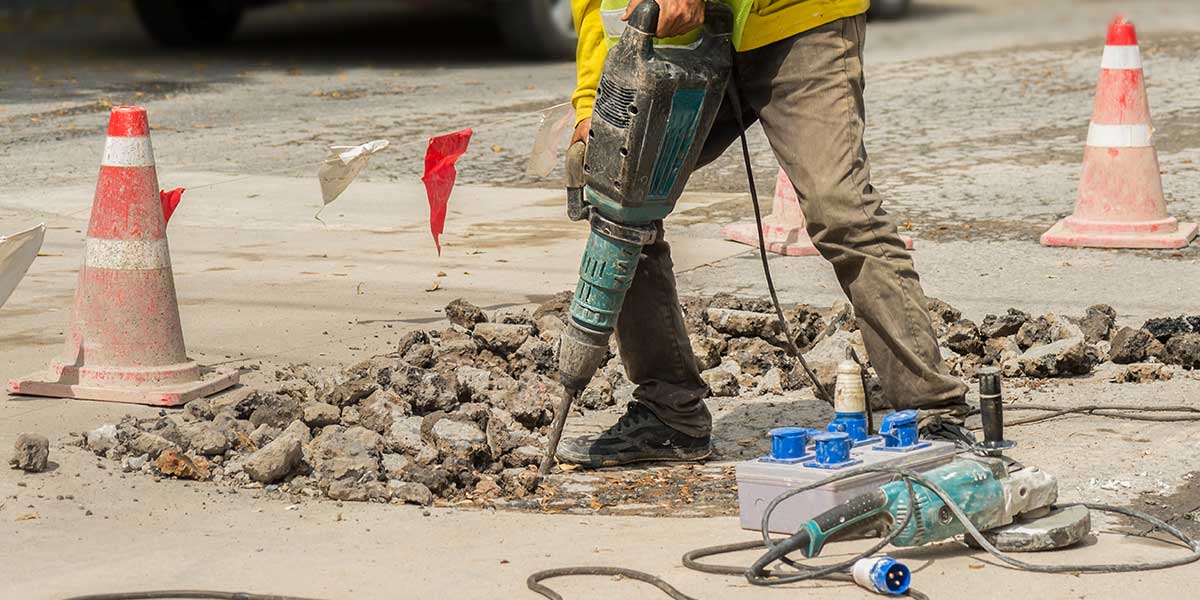Concrete sidewalks are vital components of our urban and suburban landscapes, offering safe and accessible routes for pedestrians. However, due to factors like time, weather, and usage, these sidewalks may require removal and replacement.
If you’re planning on replacing your concrete sidewalk soon, you might be wondering: How much does it cost to remove and replace a concrete sidewalk? Whether you’re planning a commercial or a residential hardscape project, preparation is key.
This guide explores the costs involved in concrete sidewalk removal and replacement, giving you the tools to make informed decisions.
Breaking Down the Costs of Concrete Sidewalk Replacement
So, how much does it cost to remove and replace a concrete sidewalk? Unfortunately, there’s no one-size-fits-all answer to this question.
The cost of removing and replacing a concrete sidewalk is largely dependent on three key variables: the size of the sidewalk, labor costs, and additional expenses related to materials and preparation.
1. Size of the Sidewalk
The size of the sidewalk to be replaced is one of the primary factors affecting the total cost of the project. Larger sidewalks will require more resources, both in terms of labor and materials.
The cost of concrete is typically calculated per cubic yard. On average, a cubic yard of concrete costs between $100 and $150. Measure the length, width, and depth of the sidewalk to calculate the volume of concrete needed in cubic yards.
2. Labor Costs
Labor costs for this type of project can vary greatly depending on the region, the complexity of the job, and the condition of the existing sidewalk.
Labor costs are usually calculated per square foot. On average, demolition costs can range from $1 to $2 per square foot, while installation can range from $5 to $10 per square foot. However, labor costs can be influenced by the project’s complexity, regional differences in labor rates, and potential challenges in the work area.
3. Additional Costs
Additional costs may include expenses for permits, site preparation, and materials, such as the concrete itself and the cost of concrete delivery.
Permit fees, site preparation, and delivery charges can add significantly to the project cost. For example, a building permit can cost anywhere between $100 to $500, while the fee for concrete delivery can range from $50 to $200, depending on the distance.
Concrete Sidewalk Replacement Cost Calculation: An Illustration
Consider an example where you’re replacing a sidewalk measuring 50 square feet. If the depth of the sidewalk is 4 inches, you’ll need approximately 0.62 cubic yards of concrete. Let’s calculate the costs:
Material Costs: 0.62 cubic yards * $125/cubic yard = $77.5
Labor Costs: 50 sq ft * $7/sq ft (average of removal and installation cost) = $350
Additional Costs: $200 (permit and delivery fee)
In this scenario, the total estimated cost would be approximately $627.5.
Reasons to Replace Concrete Sidewalks
Over time, concrete sidewalks can deteriorate due to various factors, such as age, weather conditions, and heavy foot traffic. When faced with deteriorating or damaged concrete sidewalks, it becomes essential to consider replacing them. Here are some compelling reasons to replace concrete sidewalks:
1. Safety
Cracked, uneven, or sunken sidewalks can pose significant safety hazards, increasing the risk of trips, falls, and injuries. As sidewalks age, they may develop cracks, gaps, or potholes, creating uneven surfaces that can catch pedestrians off guard.
By replacing damaged concrete sidewalks, you ensure the safety of pedestrians, reducing the likelihood of accidents and potential liability issues.
2. Aesthetics
Concrete sidewalks are a prominent feature of any streetscape, contributing to the overall visual appeal of a neighborhood. Deteriorated sidewalks can negatively impact the appearance of an area, creating an unsightly and unkempt atmosphere.
By replacing worn-out sidewalks with fresh concrete, you can instantly enhance the curb appeal of your property and contribute to the overall beauty of your community.
3. Accessibility
In today’s inclusive society, accessibility is of utmost importance. Uneven or damaged sidewalks can present significant obstacles for individuals with mobility issues, making it difficult or even impossible for them to navigate safely.
By replacing deteriorated sidewalks, you ensure that everyone, including individuals with disabilities, can move freely and independently, promoting inclusivity and equal access for all.
4. Long-Term Cost Savings
While replacing concrete sidewalks may require an initial investment, it offers long-term cost savings. Regular repairs and patching of damaged sidewalks can be a recurring expense, and these temporary fixes may not provide a lasting solution.
By opting for a complete sidewalk replacement, you eliminate the need for frequent repairs and minimize ongoing maintenance costs, saving you money in the long run.
5. Infrastructure Integrity
Sidewalks are an integral part of a city’s infrastructure. They provide a safe pathway for pedestrians and help preserve the condition of roads by separating foot traffic from vehicular traffic.
Damaged or deteriorated sidewalks can have a cascading effect on the overall integrity of the infrastructure, potentially leading to drainage issues, compromised road surfaces, or other infrastructure problems.
Conclusion
We hope this in-depth guide answers your question: How much does it cost to remove and replace a concrete sidewalk?
The removal and replacement of a concrete sidewalk is a significant undertaking that requires thorough planning, technical expertise, and a substantial financial investment. From the cost of demolition to new concrete procurement, labor charges, and finishing expenses, multiple factors influence the final project budget.
Looking for easy projects to spice up your outdoor area? Discover creative DIY hardscape ideas to transform your backyard into an oasis!

